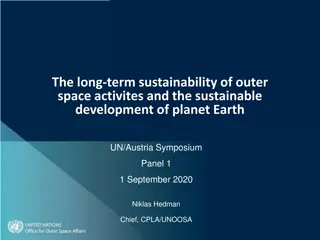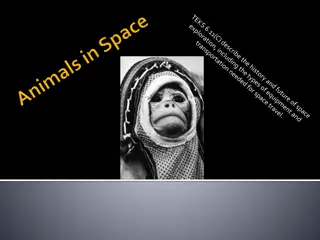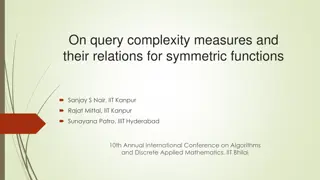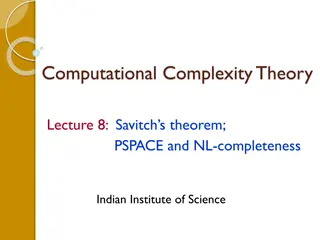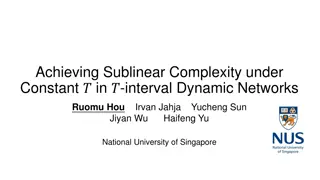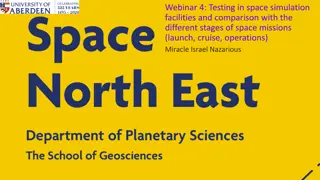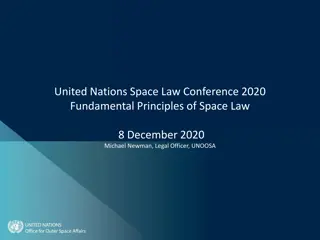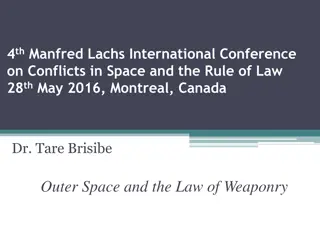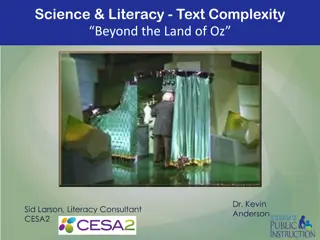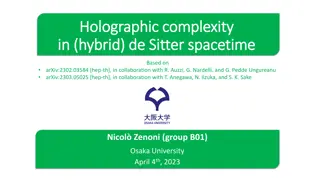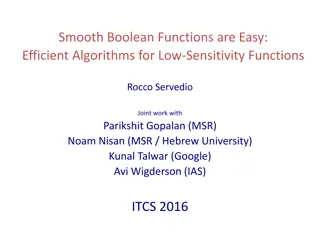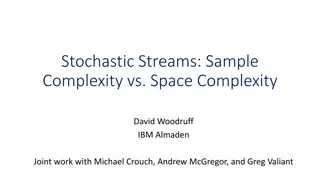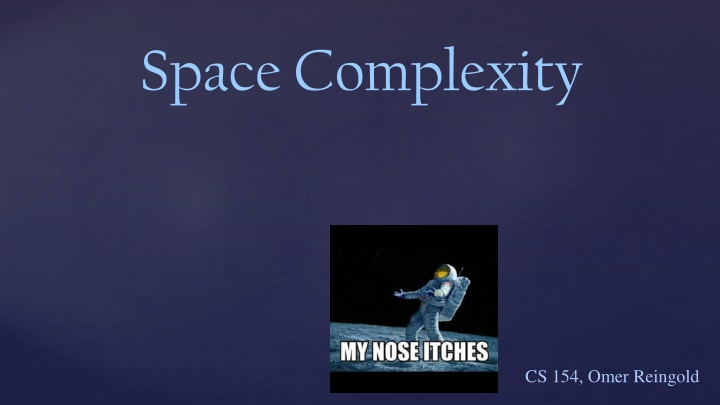
Space Complexity and Its Implications in Computer Science
Dive into the realm of space complexity in computer science with insights on measuring, defining, and analyzing space complexity along with key theorems and fundamental questions related to time-space trade-offs in computing.
Download Presentation

Please find below an Image/Link to download the presentation.
The content on the website is provided AS IS for your information and personal use only. It may not be sold, licensed, or shared on other websites without obtaining consent from the author. If you encounter any issues during the download, it is possible that the publisher has removed the file from their server.
You are allowed to download the files provided on this website for personal or commercial use, subject to the condition that they are used lawfully. All files are the property of their respective owners.
The content on the website is provided AS IS for your information and personal use only. It may not be sold, licensed, or shared on other websites without obtaining consent from the author.
E N D
Presentation Transcript
Space Complexity CS 154, Omer Reingold
Measuring Space Complexity We measure space complexity by looking at the largest tape index reached during the computation
Let M be a deterministic TM. Definition: The space complexity of M is the function ? : , where ?(?) is the largest tape index reached by M on any input of length ?. Definition: SPACE(?(?)) = { L | L is decided by a Turing machine with O(?(?)) space complexity}
Theorem: 3SAT SPACE(n) Proof : Try all possible assignments to the (at most n) variables in a formula of length n. This can be done in O(n) space. Theorem: NTIME(t(n)) is in SPACE(t(n)) Proof : Try all possible computation paths of t(n) steps for an NTM on length-n input. This can be done in O(t(n)) space.
The class SPACE(s(n)) formalizes the class of problems solvable by computers with bounded memory. Fundamental (Unanswered) Question: How does time relate to space, in computing? SPACE(n2) problems could potentially take much longer than n2 steps to solve Intuition: You can re-use space, but not time
Time Complexity of SPACE(S(n)) Let M be a halting TM that on input x, uses S space How many time steps can M(x) possibly take? Is there an upper bound? The number of time steps is at most the total number of possible configurations! (If a configuration repeats, the machine is looping.) A configuration of M specifies a head position, state, and S cells of tape content. The total number of configurations is at most: S |Q| | |S= 2O(S)
Corollary: Space S(n) computations can be decided in 2O(S(n)) time: SPACE(s(n)) TIME(2c s(n)) c N Idea: After 2O(s(n)) time steps, a s(n)-space bounded computation must have repeated a configuration, so then it will never halt
PSPACE = SPACE(nk) k N EXPTIME = TIME(2 ) k N nk PSPACE EXPTIME
Is P PSPACE? YES
Is NP PSPACE? YES
Is NPNP PSPACE? YES
P NP PSPACE EXPTIME Theorem: P EXPTIME Why? The Time Hierarchy Theorem! TIME(2n) P Therefore P EXPTIME
Space Hierarchy Theorem Intuition: If you have more space to work with, then you can solve strictly more problems! Theorem: For functions s, S : N N where s(n)/S(n) 0 SPACE(s(n)) SPACE(S(n)) Proof IDEA: Diagonalization: Make a machine M that uses S(n) space and does the opposite of all s(n) space machines on at least one input So L(M) is in SPACE(S(n)) but not SPACE(s(n))
Nondeterministic Space Classes Let N be a non-deterministic TM that halts on all inputs in all of its possible branches. The space complexity of N is the function f : N N, where f(n) is the furthest tape cell reached by N over all computation paths, over all inputs of length n. Definition:NSPACE(s(n)) = { L | L is decided by a non-deterministic Turing Machine with O(s(n)) space complexity}
Savitchs Theorem Theorem:for every nice function s : N N, where s(n)>n for all n, NSPACE(s(n)) SPACE(s(n)2) Open: does NSPACE(s(n)) = SPACE(s(n)) ? NPSPACE = NSPACE(nk) k N Corollary: NPSPACE = PSPACE
coNPNP MIN-FORMULA PNP coNP TAUT NPNP P SAT FACTORING NP PSPACE EXPTIME
Parting thoughts: More Space, more power Relation of time and space wide open. Polynomial-time hierarchy contained in PSPACE, which contains interesting problems ( chess is PSPACE complete). Non-determinism may reduce space but less dramatically.

![Read⚡ebook✔[PDF] Linking the Space Shuttle and Space Stations: Early Docking Te](/thumb/21519/read-ebook-pdf-linking-the-space-shuttle-and-space-stations-early-docking-te.jpg)
![READ⚡[PDF]✔ Emerging Space Powers: The New Space Programs of Asia, the Middle Ea](/thumb/21554/read-pdf-emerging-space-powers-the-new-space-programs-of-asia-the-middle-ea.jpg)
